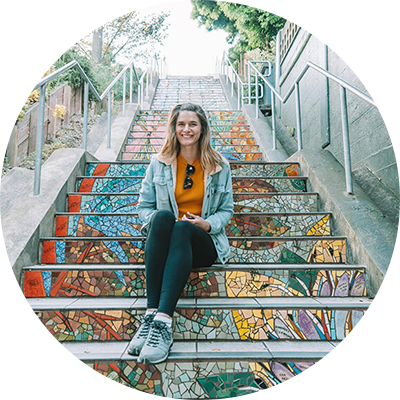If you’re interested in hiking but don’t know where to start, check out my best tips for hiking for beginners.
I’m an avid hiker. There’s no sugarcoating that. It’s one of – if not – the best ways to travel and see a new location or country.
There’s more to see than cities; every country has a beautiful national park suitable for beginner hikers.
Another great perk of hiking when traveling is it can also be super cost-effective! But if you’re new to hiking, then it can be scary. I’ve been there.
What helped me many years ago was learning the proper trail etiquette and which outdoor gear is necessary and which isn’t for a beginner.
After all, the hiking needs of beginners are different from those of advanced mountaineers.
In this article, I’ll go over everything you need to know, from hiking tips for beginners to essential hiking gear.
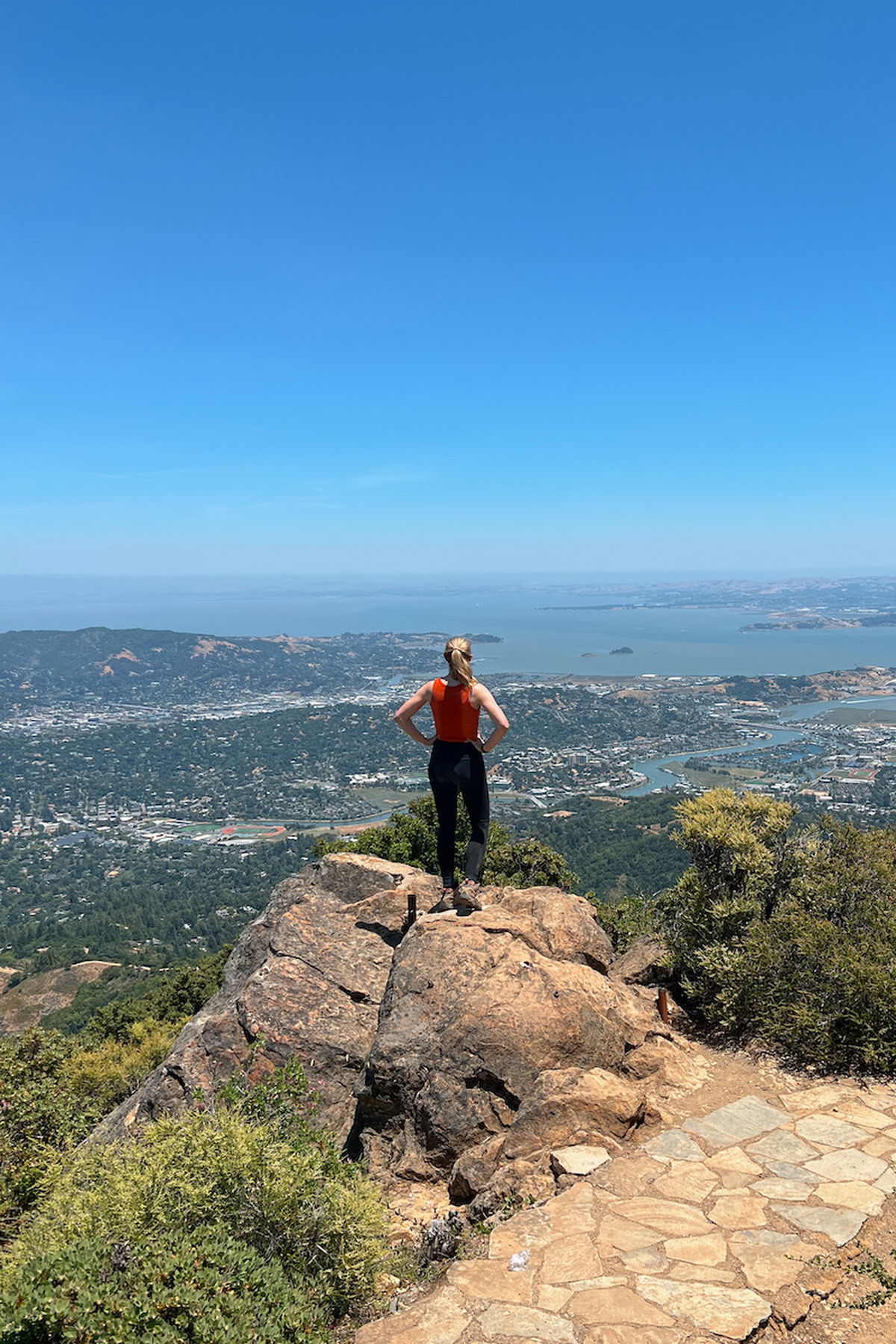
What is Hiking?
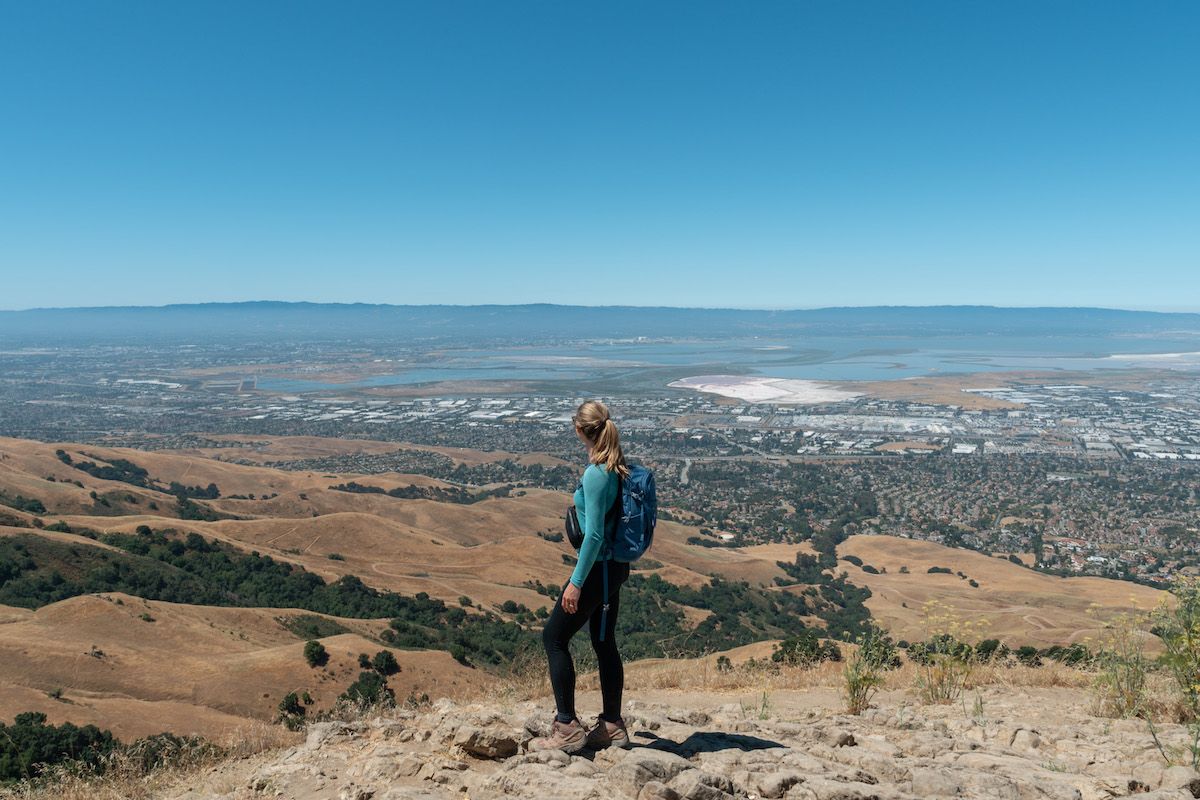
When many people think about hiking, they imagine an intense activity through the mountains. In reality, a hike can be a simple and easy walk through a park. It’s whatever you want it to be.
“Walking for pleasure” has to be outside in nature, but the difficulty level can be any. Don’t let anyone tell you otherwise. Some of my favorite hikes have been on beginner hiking trails.
There are many different styles and levels to hiking, as I soon learned during my journey in the hiking world.
Types of Hikes
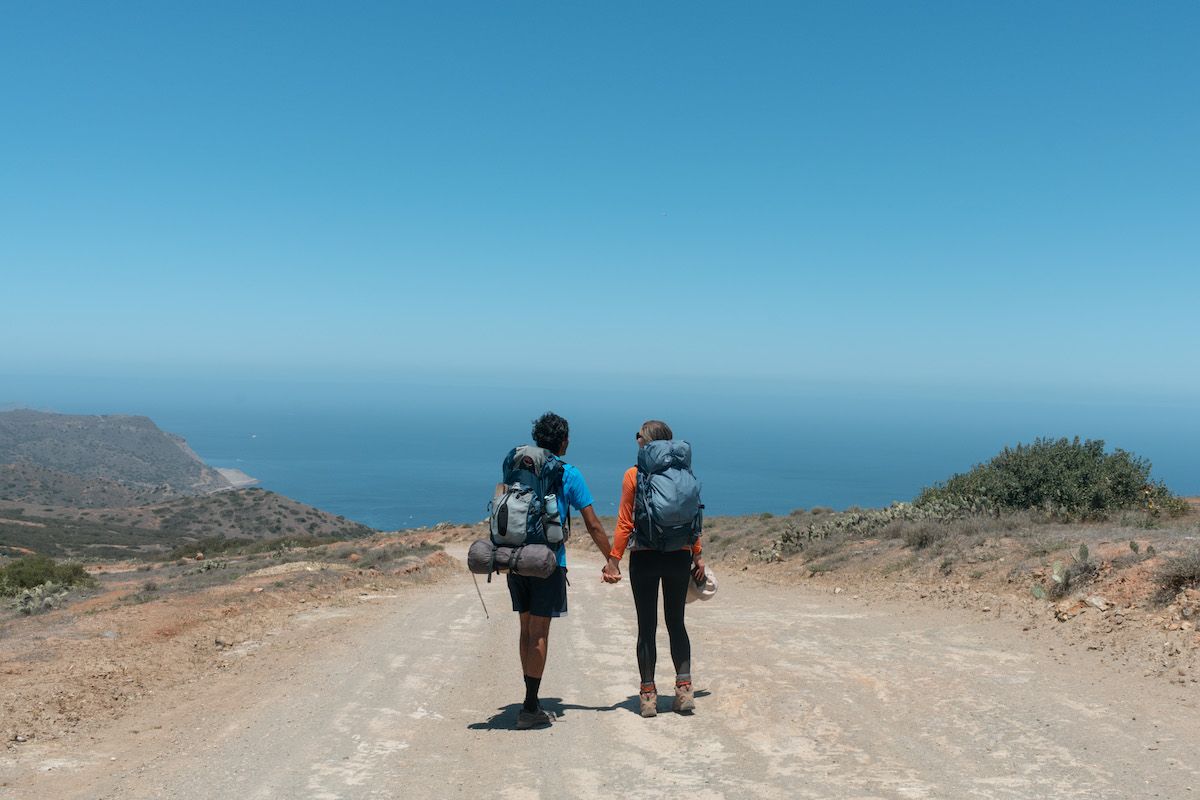
Day Hikes
The most common and popular type of hike is the day hike. These are generally on shorter trails and will only take one day to complete.
I suggest day hikes for beginners to get out on their first hike and build confidence.
Sometimes, I even turn longer trails into day hikes by completing only part of it before heading home. That’s the beauty of hiking!
Day hikes are often on well-marked trails and are typically the most popular type of hike – making them an excellent choice for a beginner hike.
These day hikes are often an out-and-back trail. I usually do an out-and-back route when visiting an attraction like a waterfall or lake.
Thru-Hiking
Thru-hikes sometimes appear extreme because you start at one point and end at another. Below are some popular thru-hikes that may come to mind:
- Appalachian Trail
- PCT (Pacific Crest Trail)
- Continental Divide Trail
- John Muir Trail
- The Kalalau Trail
No one expects a beginner hiker to do incredibly long and challenging thru-hikes like the Appalachian Trail.
These hikes are enormous accomplishments in the hiking community, as they should be! Some other popular names for thru-hikes are end-to-end or point-to-point hikes.
If you’re a beginner hiker, cheer your experienced friends on and remember that thru-hikes take years of preparation.
Loop Hikes
Loop hikes can be either day hikes or multi-day hikes. It all depends on the trial. I love these for backpacking because they have been going to see multiple attractions along the way.
A loop hike is when you start at point A and hike in a circle to meet back at point A. Along this trail, you’ll never repeat any of the same paths.
Trekking
Trekking is a unique style of hike. It can be rugged and sometimes off-trail. The main point of a trek is to reach a specific destination that, for the most part, is very difficult to get to.
During many of my treks, the route felt important for more than just seeing incredible things in nature. These treks were an entire experience.
The Lost City Trek was one popular trek in South America. We hiked through the jungle to reach some of the oldest structures on the continent.
Backpacking
Backpacking is my favorite hiking style, but it isn’t for everybody. There’s something special about immersing myself in nature without connecting to the outside world for a few days.
In addition to typical hiking gear, I bring my tent, food, water filter, and other backpacking gear to last several days. Depending on the trail, I might only encounter fellow hikers at the campsites.
It’s best to experience backpacking with hiking buddies, but not too many.
When spending time outdoors backpacking, I come back to the real world feeling refreshed but ready for my next hike.
Mountaineering
I don’t have much experience with mountaineering (yet), but it’s for experienced hikers only.
You first have to develop the skills for mountaineering, like the basics of rock climbing.
There are easier mountains with minimal climbing that aren’t as technical, but typically, most mountaineering is demanding and expensive. It takes years of training and more equipment.
So if anyone talks about mountain hiking for beginners, they’re referring to something much less challenging and more about the views from certain lookouts.
Choosing a Hiking Trail
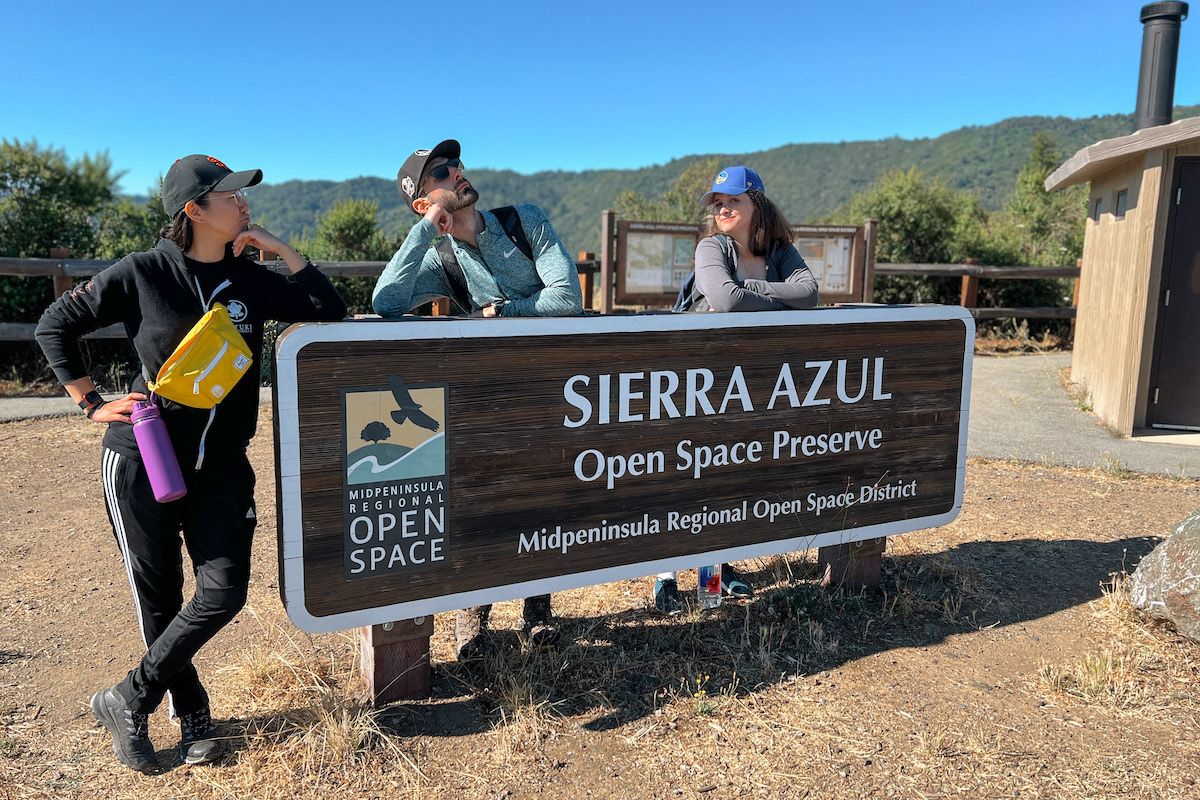
How long should a hike be for beginners?
There’s no simple answer to how long a hike should be for beginners. All hiking beginners start at a different level. It also depends on the difficulty of the trial.
A one-mile trail with a huge elevation gain will be more challenging than three miles with almost no elevation gain.
Generally speaking, it’s advisable to only go on hiking trails that are a maximum of a few miles long if you’re a beginner hiker.
Any hike is good to practice and get your body used to walking on a trail. Push yourself, but not too hard. It’s safest to build muscles and cardiovascular health gradually.
Elevation
The great outdoors has spectacular natural formations, some at higher elevations. Three types of elevation are good to know.
Elevation, or altitude, is the vertical distance above sea level. The higher the elevation, the harder it is to breathe. When I arrived at high-elevation areas, something as simple as walking upstairs took my breath away.
The other type of elevation is elevation gain. This is the total distance you’ll climb in a day. Elevation loss is the third type and doesn’t affect the elevation gain.
If the elevation gain for a hike is high, I would make it a point of emphasis to start a hike early. As a beginner, try to avoid high-elevation and high-elevation gain hikes.
Terrain
Knowing the different terrains of a route helps when planning a hiking trip, especially for beginners.
Below are some of the most common types of terrain that beginners may encounter.
Mountain
Mountain ranges are my favorite places to go hiking. I wouldn’t suggest them as your first hike.
The mountain terrain was common during my travels through South America. You must be careful of the elevation.
The higher elevation you climb (and the faster), the more likely you’ll get altitude sickness. Solo hiking here as a beginner can be very dangerous.
Forest
Trails in a forest are a good place to hike as a beginner. These hikes might not be as easy as walking in the park, but they are doable. These trails are mostly dirt trails.
Many trees will be on forest hikes, and the chance of running into a wild animal is higher. I credit the Appalachian Forest for helping me become addicted to hiking.
Desert
Desert hikes are simply unique. I went on many hikes in the desert while in Arizona and loved it.
Most of my hikes in the desert weren’t too difficult when considering elevation gain. The hardest part was the hit and the constant sun.
These types of hikes can be great for beginners, but bringing the right gear for sun protection, such as a sun hat, is very important.
Tips for Choosing a Hiking Trail
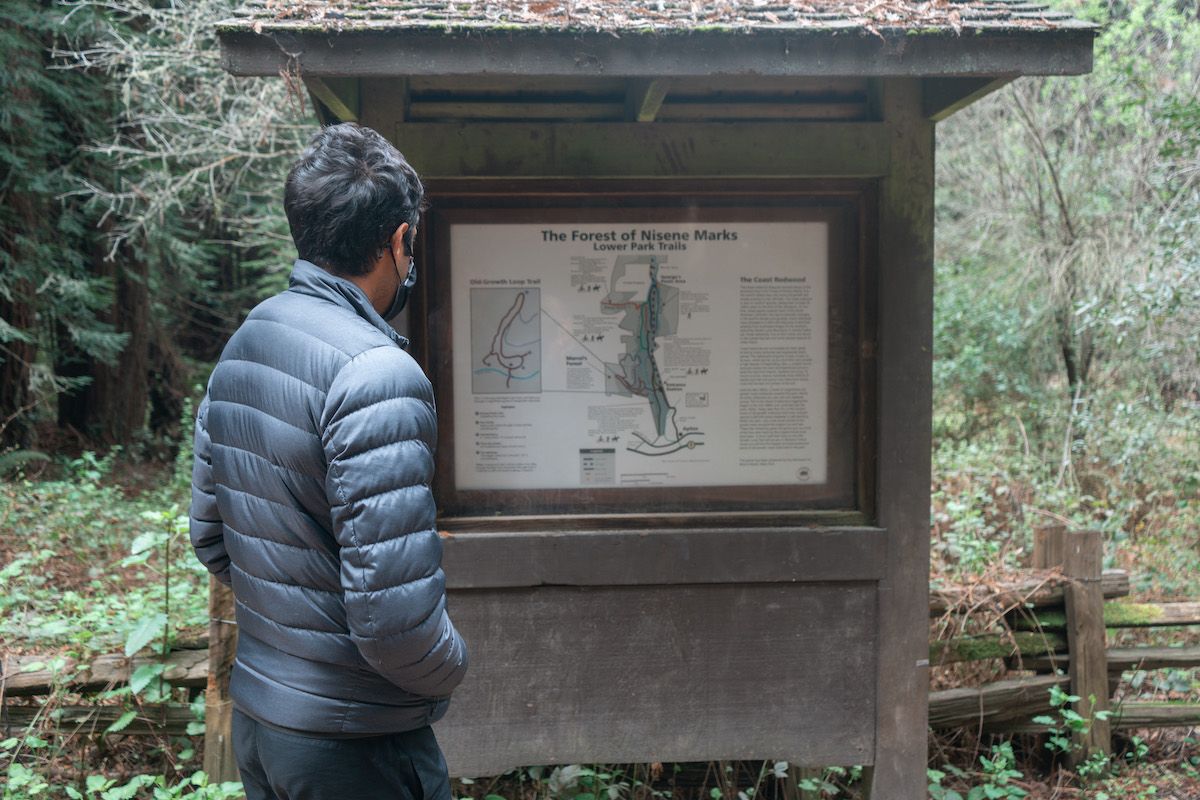
Choose a Short Trail
Choosing a short trail as a beginner is essential. There’s nothing more demotivating than having to turn around on a hike.
When I first started hiking, I chose a long trail of 10 miles. I thought this would be easy but instantly regretted it two miles in.
I compare hiking to any other physical activity like lifting weights and running. Everyone has to start slow and slowly increase their weight or distance.
Do Research Before Hiking
The biggest mistake I see beginner hikers make is not doing the research needed before going on the trail. Research might not be necessary for local trails, but it’s for the longer ones.
Keeping up to date on the trail conditions and any new routes is wildly important.
A paper trail map might be outdated, so I suggest downloading an offline map just in case. Doing the research beforehand will let you know if the hike is too hard to try as a beginner.
Hike a Popular Trail
Hiking busy trails is controversial for some and goes against what I do today. I hate being on the trail around large groups — it usually makes the route noisier and more crowded. Group hikes have their place, though.
As a beginner, safety is a priority. No one wants to get injured or lost hiking.
I suggest hiking popular trails that are well-marked and easy to follow.
Then, test other hikes as you build confidence, endurance, and knowledge about hiking.
Plenty of Bay Area hikes are suitable for beginners if you’re in the area!
California generally has a lot of good hiking for beginners on a budget because you can often ride public transit to (or close to) the trailhead.
How to Prepare for a Hike for Beginners
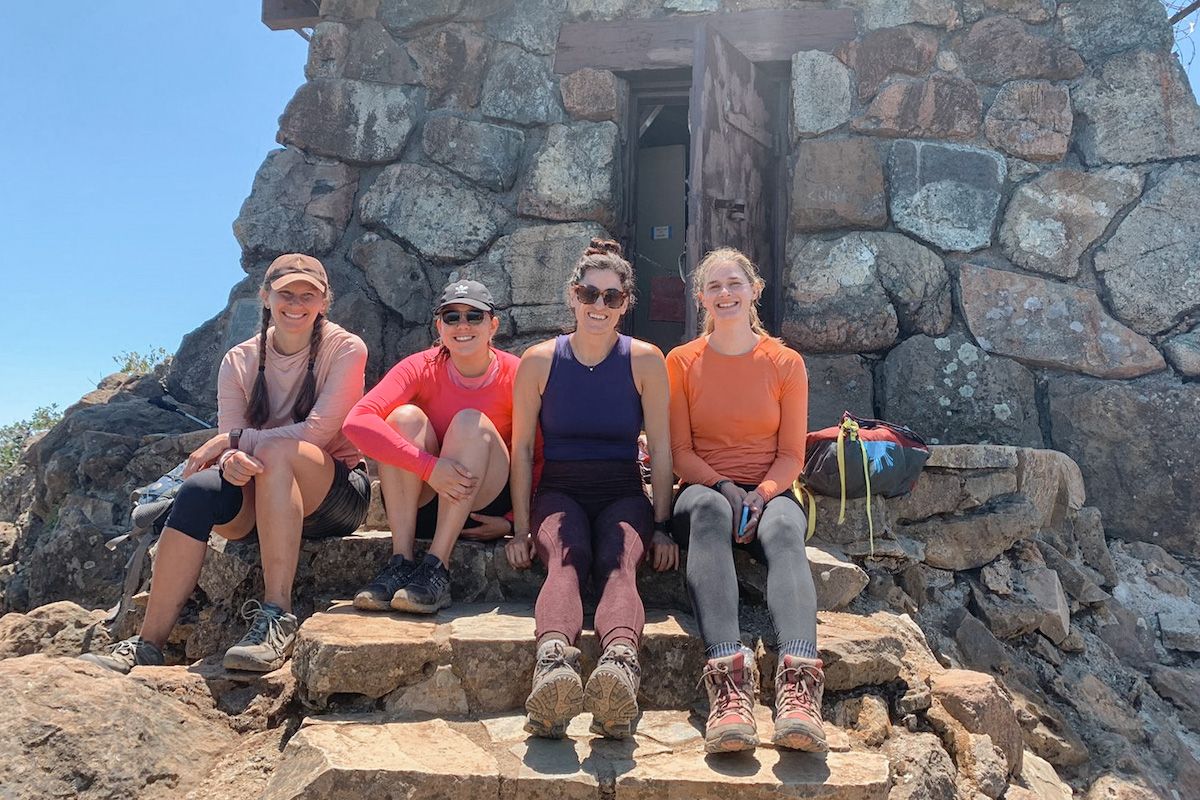
Hiking Clothes for Beginners
Hiking Pants/Shorts
Having the right hiking clothes is vital when going out on the trail. Hiking is supposed to be fun, and there’s nothing fun about feeling uncomfortable.
I choose the right pair of pants depending on the climate type I’m hiking in. Suitable attire makes or breaks those longer hikes.
For the longest time, I only hiked in shorts, and I wish I had bought a nice pair of pants sooner. Pants like the KUHL Renegade Rock or prAna Halle Straight Pants are my favorite for all styles of trails.
These pants offer UV protection and dry quickly, so you’ll be ready for whatever happens on the trail. Don’t overthink your hiking clothing. Just get the essentials.
Read our full review of the best women’s shorts for hiking.
Wool Socks
No matter the length of the hike, it’s always nice to have the right pair of hiking socks. Choosing the right sock can help prevent blisters that kill all fun on a hike.
Our feet make our engine go for a hike; without a healthy foot, there’s no hiking. That’s why wool socks are so popular with hikers.
My favorite Smartwool socks (Men’s & Women’s) offer breathability and cushion. Smartwool is a favorite company among hikers that I fully trust.
Jacket
A nice jacket seemed unnecessary when I started because I only went during the summer. This couldn’t be further from the truth.
At the top of almost every hike in the Appalachian Forest, the winds were stronger, and I became cold. Having a waterproof jacket is smart, too.
Companies like Patagonia and Arc’teryx make fantastic jackets for all climates.
I’ve had my Patagonia jacket for five years (Patagonia Men’s & Women’s) and expect to have it for another five years.
Hiking Shirts
We all sweat during hikes. It’s no different for first-time hikers or advanced hikers: hiking is hard. Wearing the correct hiking shirt is essential to feel comfortable while day hiking.
I’ve made the mistake many times of wearing a non-athletic shirt.
Sometimes, I even wore 100% cotton shirts, and I don’t think I’ve sweated more my entire life. These shirts keep heat trapped in and don’t dry fast, either.
I found wearing long-sleeve shirts during hiking beneficial, even if it’s sunny. Mountain Hardwear’s Crater Lake Hoodie is my favorite hiking shirt I wear on every hike.
The Mountain Hardwear hoodie is perfect for hiking because of its lightweight, which keeps you cool and protects against the sun! It functions as a great extra layer of protection.
What Should a Beginner Take Hiking?
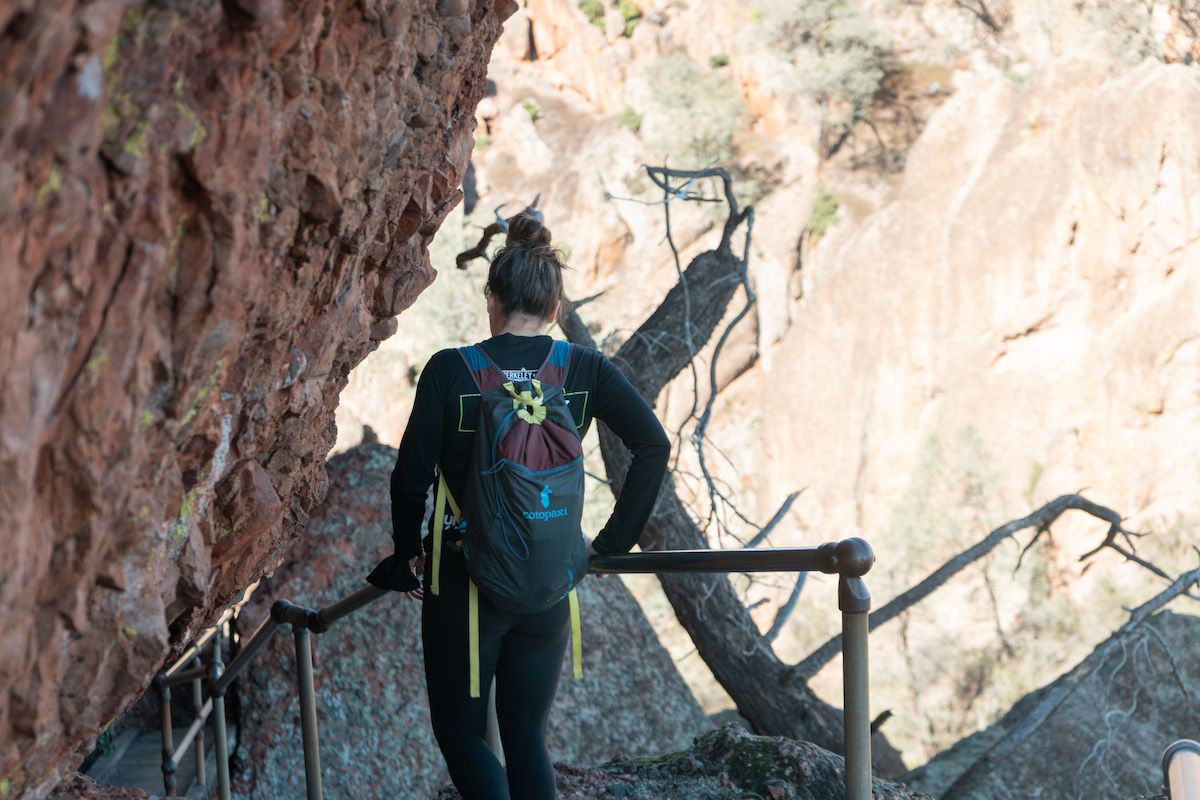
Hiking Boots
Everyone wants to jump straight to buying the most expensive pair of boots when they first start out. This isn’t bad, but top-tier boots aren’t technically hiking essentials for beginners.
It all depends.
The rule of thumb for hiking shoes and boots is to buy something that you’ll actually wear. Buy them after you’ve been on a few hiking trails for beginners if it’s becoming a regular hobby.
Consider the type of terrain and style of hike you’re attempting, as well as your foot needs.
Columbia Newton Ridge are the best hiking boots for beginners. They’re affordable, easy to order on Amazon, made of waterproof leather, and offer good ankle support.
Meanwhile, the Merrell 3 Mid Moabs are the best hiking shoes for beginners. Merrell is a trusted brand because their shoes are so durable and comfortable.
Sneakers aren’t suitable for technical hikes, but a good pair of trail running shoes is better hiking gear for beginners than flip-flops. (Yes, I’ve seen people hike in flip-flops. No, it’s not a good idea.)
Interested in barefoot shoes for hitting the trail? Read our guide to picking the best barefoot hiking shoes.
Hiking Backpack
Whether going on a long day hike or walking in the park, I always bring my backpack. I use it to hold my water, snacks, jackets, and anything else that I want to bring.
My go-to backpack for day hiking is a 25L trail pack. It’s the perfect size for carrying a water bottle, snacks, a jacket, and a first aid kit.
The best daypack for beginners is the Osprey Daylite Cinch because it’s ergonomic and affordable. This thing rocks and is all you need when starting out. It’s only 15L, but it’ll get the job done.
Food/Water
My favorite thing is to hike up to a peak with a beautiful backdrop and eat lunch. There’s no better feeling.
Bringing the correct amount of water and food is essential for a beginner. The best types of food to eat on hikes are those that are easily digestible and give you energy.
It’s never a bad idea to have some extra food. Some examples are:
- Nuts (any healthy fats)
- Fruit
- Granola Bars
- Peanut Butter and jelly sandwich
- Meat Jerky
Trekking Poles
Trekking poles are helpful for beginner hikers because they relieve the pressure off your knees and offer stability. Over the years, my knees have ached, and I don’t hesitate to use them.
They might not be necessary if you’re going for a walk in the park or a short adventure. Don’t be afraid to use trekking poles, though.
Trekking poles can help you get out on the trail to build strength, so over time, you might only need them for a longer hike now and then.
Medic Kit
Many hikers, including myself, forget a medic kit (or first aid kit), but having one is always a good idea. Accidents happen, and it’s best to be prepared.
Gauze, antiseptic, bandaids, and an elastic bandage are all smart things to add to your first aid kit when on the trail.
First aid kits make excellent hiking beginner equipment gifts. They’re in every price range and size.
Download a Hiking App
This article is full of do’s and don’ts, but downloading a map is my favorite. All hikers, not just beginners, should have a downloadable map.
More times than not, there is no signal or unreliable signal when in the wilderness. It’s smart to download the trail or map using apps like Alltrails and Mapsme.
Read our complete guide to the best hiking apps.
How Do I Prepare My Body for Hiking?
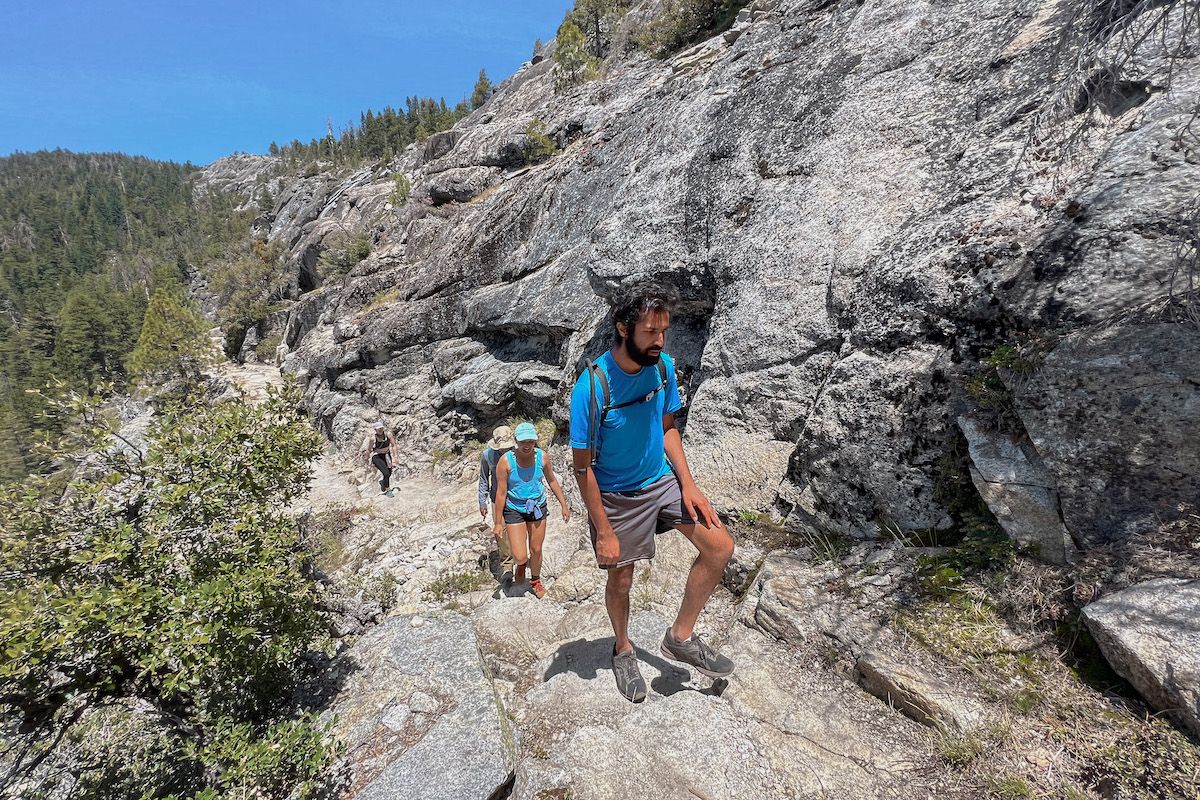
Do Other Cardio Activities
I love that hiking is a full-body workout. It’s a combination of cardio and strength. The best way to get better is to hike. But what if you can’t always hike?
Many people ask me how to start hiking when out of shape. Cardio exercises like running, Stairmaster, and bike rides help prepare your body for hiking.
Working out on the Stairmaster or walking on a heavy incline on the treadmill is the closest thing to walking up a hill.
Eat the Proper Nutrition
Eating the correct diet is essential no matter what physical activity you’re trying to get better at. Hiking is no different.
Everyone is on their own dietary journey, so follow your intuition. A lot of hikers prioritize a balanced diet with fruits, vegetables, healthy fats, and protein.
Lift Weights
While getting extremely bulky might not be an ideal body type for a top-tier hiker, lifting weights does help. Lifting weights twice a week can help to prepare your body for hiking.
Some exercise examples to do in the gym are:
- Lunges
- Squats
- Planks (or any ab exercise)
- Squat Jumps
Everything Else You Need to Know for Your Hike
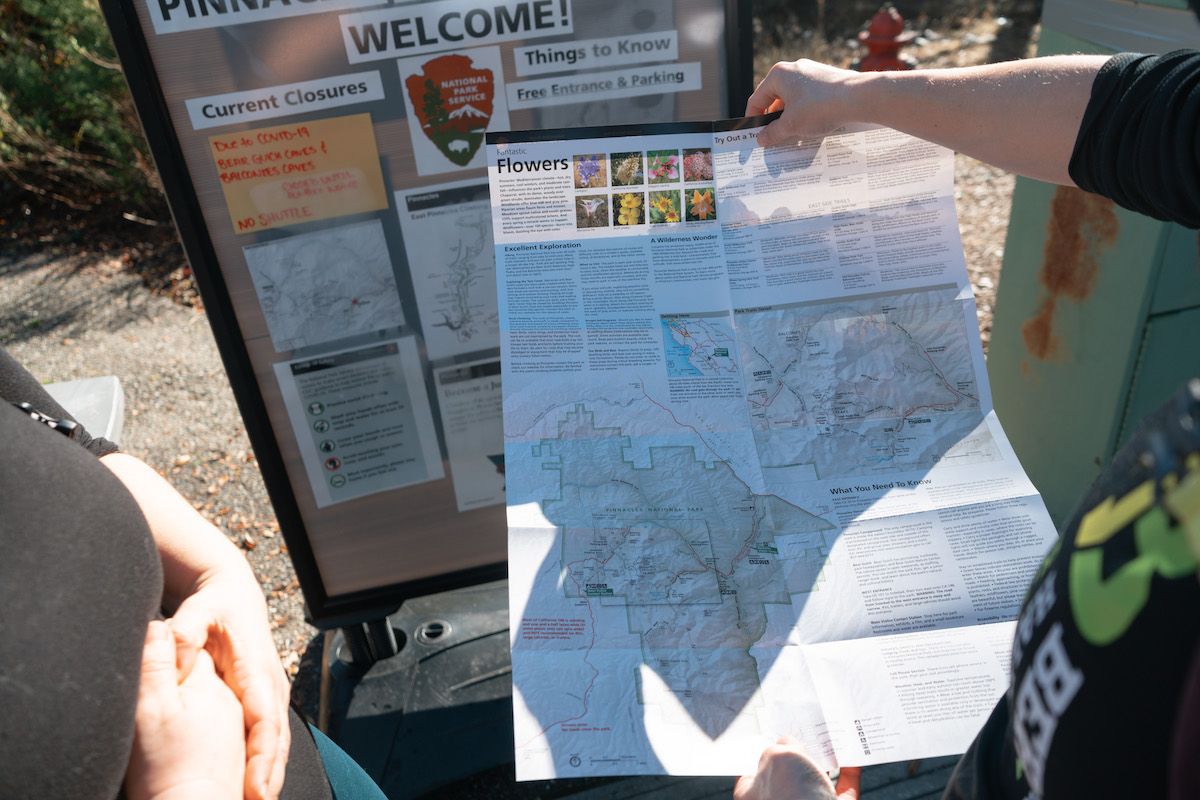
Safety Tips
Safety is always the number one concern when hiking outdoors in nature. Below are some additional safety tips that are worth noting.
- Stay up to date on the National Park Website or trail website
- Bring Enough Water (for you and your furry friend)
- Try to Avoid Inclement Weather
- Read Recent Trip Reports of the Trail Conditions
- Follow the Trail Etiquette
- Find Hiking Buddies
- Pack Hiking Layers
What to Do if You See an Animal
Seeing wild animals is a unique experience and can truly elevate a hike.
The best response differs from animal to animal. The one hard and fast rule is to keep your distance no matter what type of animal you encounter.
Remember that when hiking, we are in THEIR home. Not the other way around.
And since most questions about seeing an animal in the wild concern what to do if you see a bear, here are a few tips for bear safety:
- Make Yourself Known
- Appear Large
- Do Not Keep Food Near the Campsite
- If a Grizzly Bear is attacking you, play dead
- If a Black Bear is attacking you, fight back or find safety
Hiking Etiquette
The #1 etiquette rule while hiking is to respect others. We’ve all heard the saying, “Treat others as you would like to be treated.” It’s the same thing out on the trail.
Below are other important hiking tips to follow:
- When hiking, the uphill hikers have the right of way. If you’re climbing down while someone is climbing up, let them go first.
- If other hikers are behind you, going faster, let them pass.
- Don’t play music out loud.
- Stay on the Trail.
- Hikers have the right of way to mountain bikers.
- Don’t disrupt the wildlife.
- Make yourself known to other hikers.
Leave No Trace
It’s our duty as hikers to protect the National Park system and forests we love so much. That’s why the ‘leave no trace’ principle is so important.
These principles help to maintain nature for our future generations to enjoy. Reducing human impact keeps these parks as beautiful as when we first saw them.
Here are some of the ways to leave no trace:
- Plan ahead and prepare. Learn the local regulations and go with smaller hiking groups.
- Properly dispose of waste. Use the “pack it in, pack it out” motto.
- Leave what you find. The most common thing I see while hiking is people stacking rocks. Don’t do this. (Don’t take the rocks either.)
- Respect wildlife
- Minimize the use of campfire.
Outdoor enthusiasts love their fresh air, as do I. So let’s work together to keep the parks clean.
FAQs for Beginner Hikers
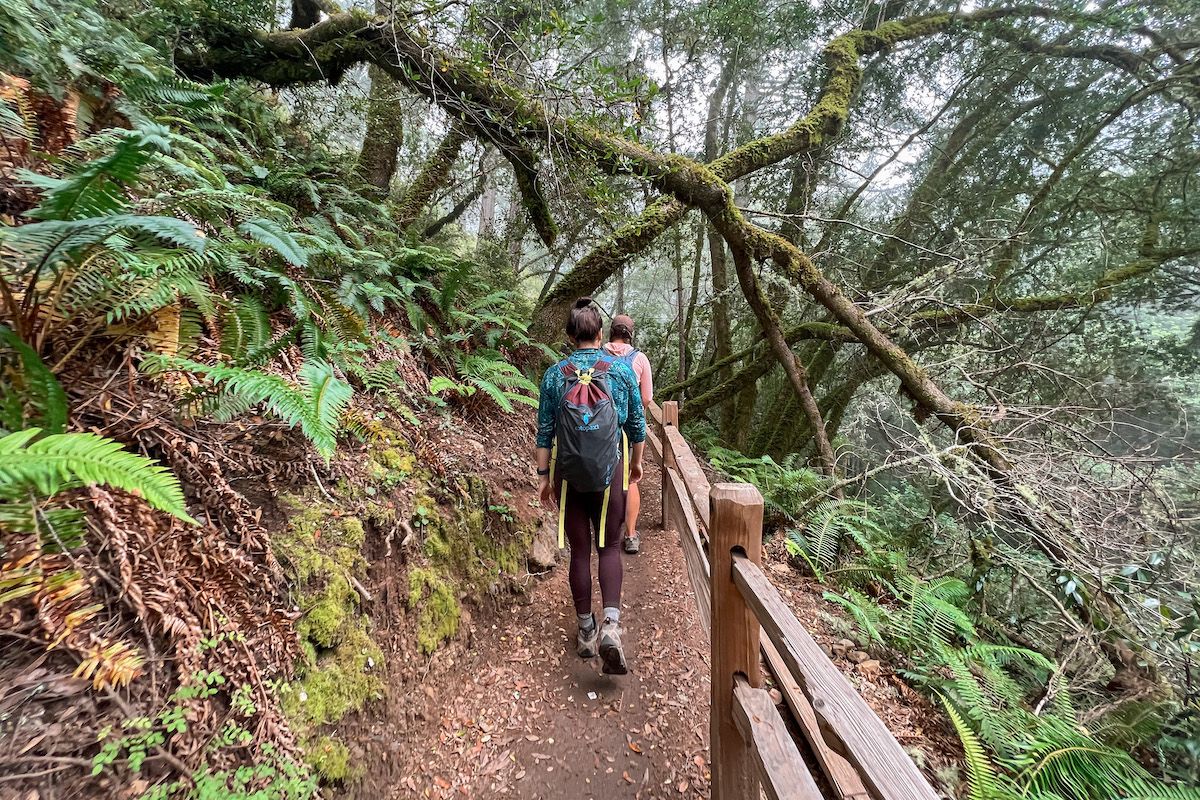
Should I hike with a friend?
Going with a hiking group or a friend on a trail is a great way to get your feet wet as a beginner. If you don’t have any friends who like hiking, check Facebook groups like HikerBabes and Outdoor Afro.
What are the three basic skills in hiking?
The three basic skills in hiking are maintaining an adequate fitness level, map-reading, and emergency preparedness. You can conquer any hike with this set of skills.
How can I hike without getting tired?
Being physically fit and taking frequent 30-second breaks can help you hike without getting tired.
What are three things you should do before going on a hike?
These three items are the most important things to do before hiking.
- Study the route and download an offline map
- Check the weather and pack accordingly
- Bring enough food and water to last you
What not to do before hiking?
Don’t drink alcohol before hiking, and don’t stay up late. Being hydrated and well-rested are keys to having a good hike.
Can the average person hike 10 miles?
In general, the average person can hike 10 miles. But this question has some variables to it. If the hike has an insane elevation gain, those 10 miles will be more difficult.
A beginner can hike five miles in a day without many risks.
What time of day is best for hiking?
The best time of the day to hike is early in the morning. Hiking in the morning helps you avoid crowds as well as the heat.
Hiking during sunrise and sunset are also fantastic times to go hiking but may not be suitable for beginners. Hiking in the dark is dangerous because it’s hard to see the path, and nocturnal animals might be out hunting.
Conclusion
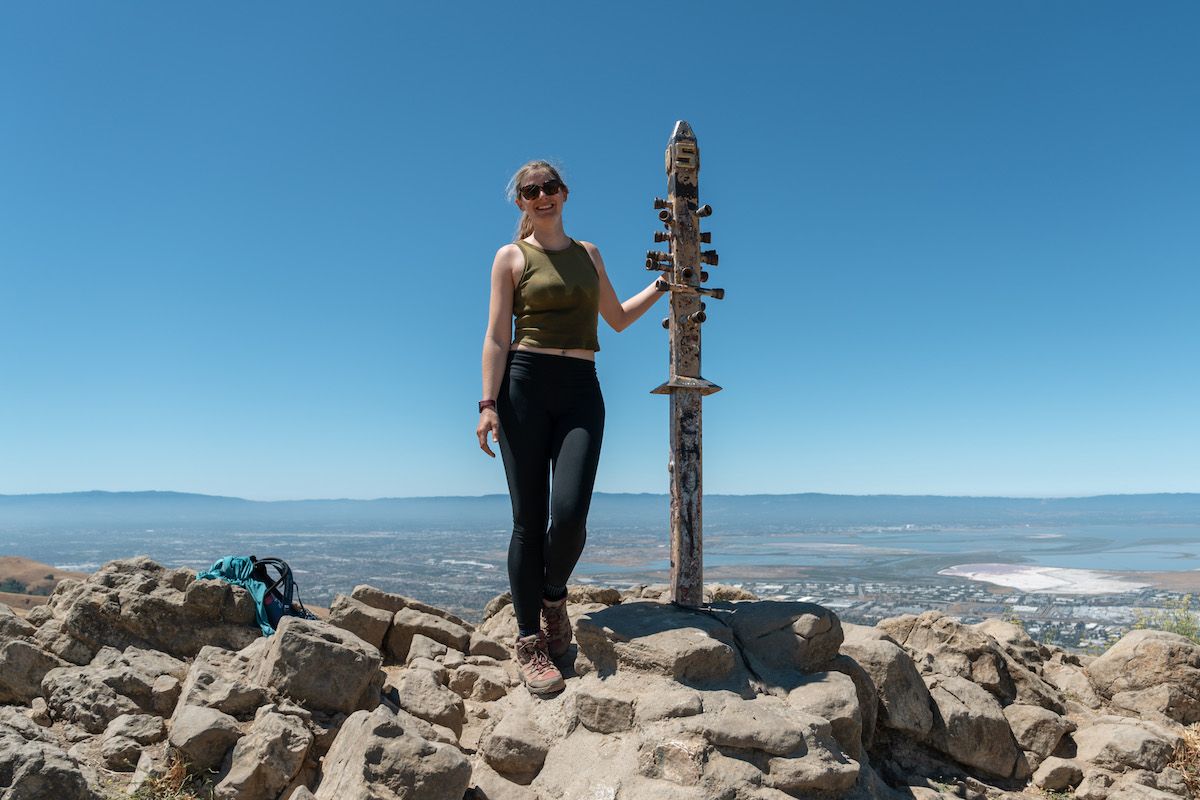
Hopefully, this hiking guide for beginners has made you feel more comfortable about hitting the trail this hiking season!
I scattered tips on hiking for beginners throughout the article, but if I could leave you with just one tip, it’s to have fun.
Hiking is supposed to be a beautiful and joyous experience. The more fun you have, the more likely you’ll keep hiking.
Looking for specific hikes in California? Check out our articles on the best hikes in San Francisco, the Bay Area, San Jose, Santa Cruz, Big Basin State Park, Big Sur, Big Bear, Orange County, Laguna Beach, Lake Tahoe, Catalina Island, Malibu, Torrey Pines (San Diego), Joshua Tree National Park, and Sequoia & Kings Canyon National Parks.
ABOUT THE AUTHOR

Phillip Anderson
Phillip Anderson is a freelance travel writer, personal trainer, and adventure enthusiast. He has been actively hiking for 10+ years now, trekking diverse terrains from Virginia’s lush forests and Arizona’s deserts to the challenging elevations of Huayna Potosi in Bolivia and the dense jungles of South America.
Through his hiking experience, Phillip honed expert hiking skills like navigation, gear selection, and adapting to varying climates and topographies. He excels in planning hiking routes, ensuring safety, and providing insightful recommendations to fellow enthusiasts. Phillip’s passion and extensive knowledge make him a reliable guide for anyone looking to embark on their next hiking adventure, regardless of destination or difficulty level.
Looking for more awesome hiking recommendations? Check out our related articles below!
Best Hiking Underwear for Women
Best Dog Backpack Carriers for Hiking
Best Minimalist Hiking Sandals
Best Handheld GPS Devices for Hiking
Best Outdoor Watches for Active People
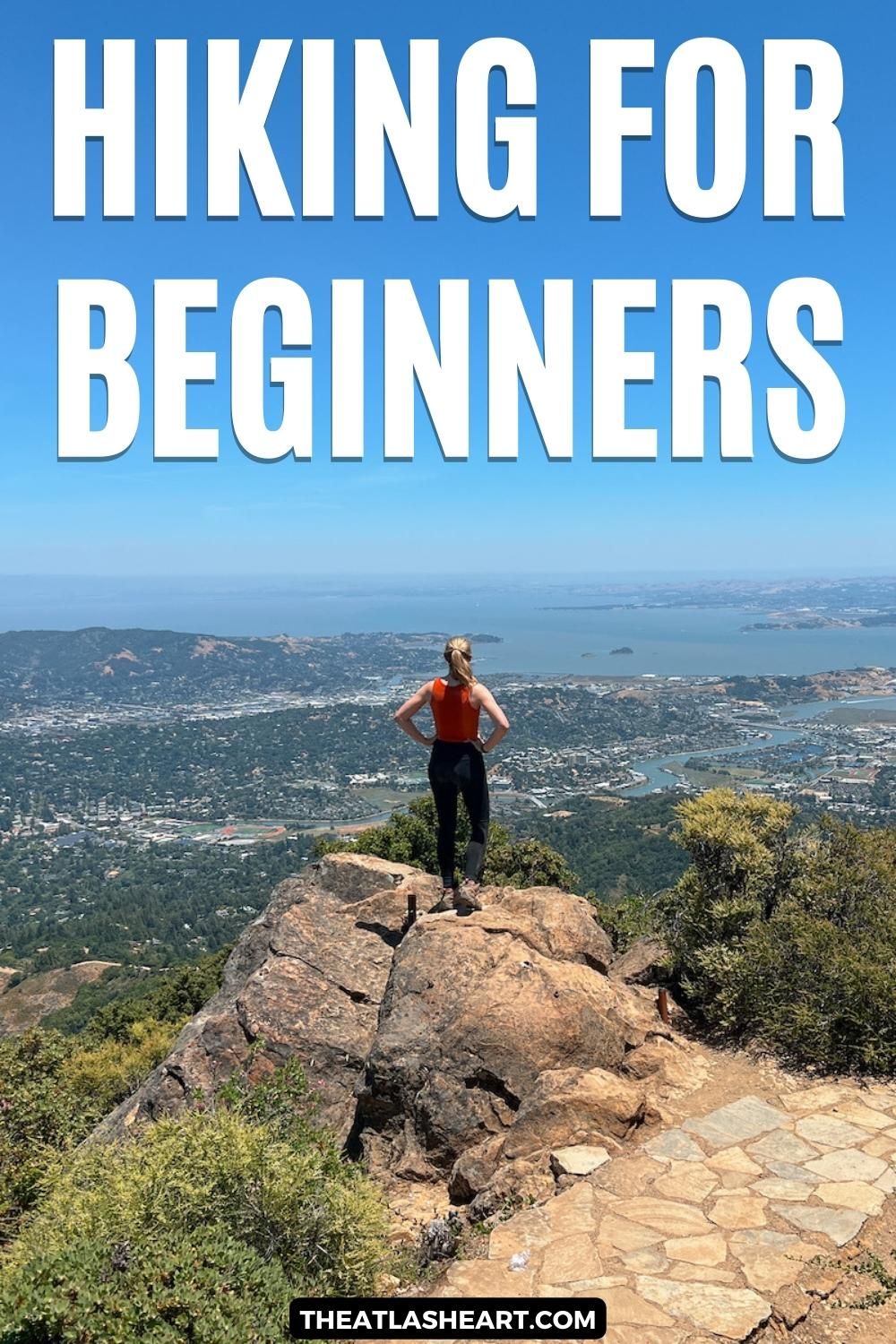
Pin this image for future reference

